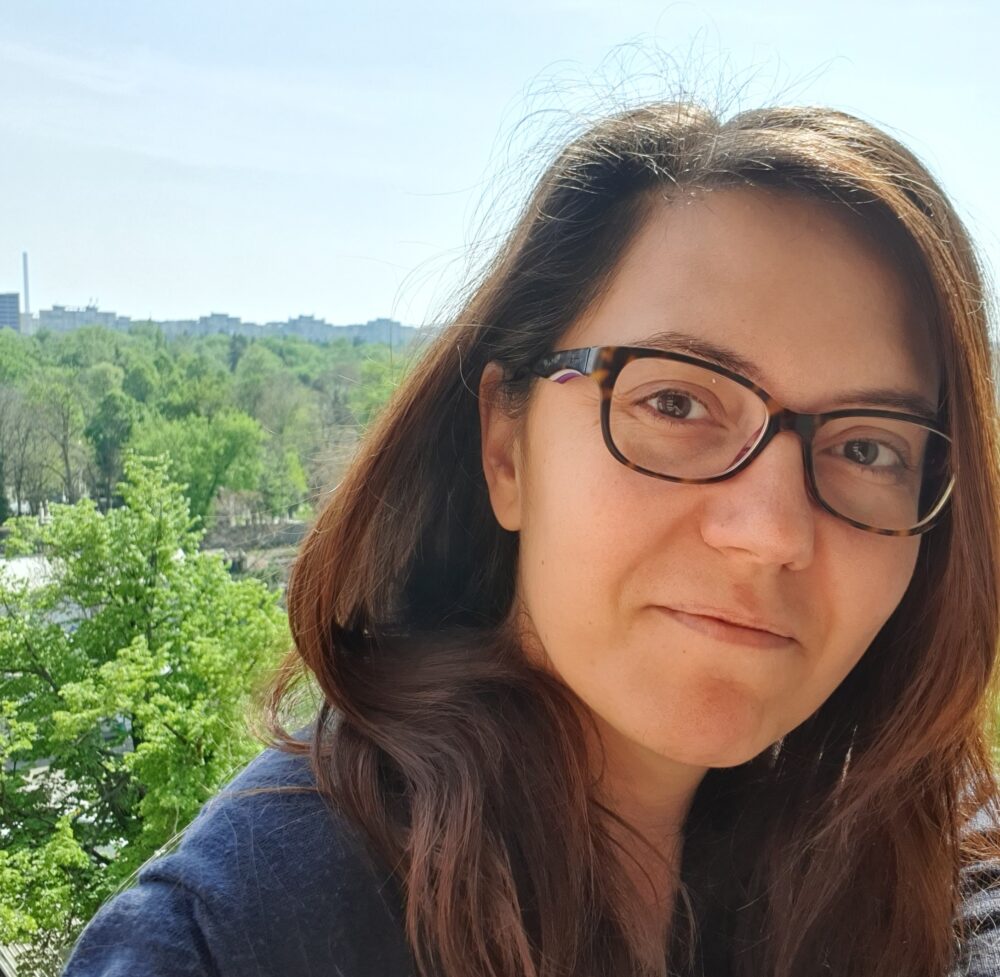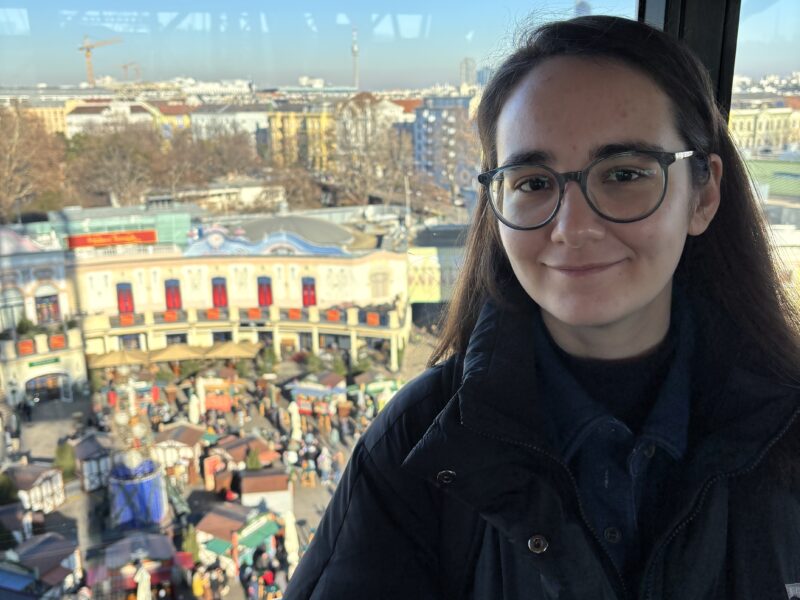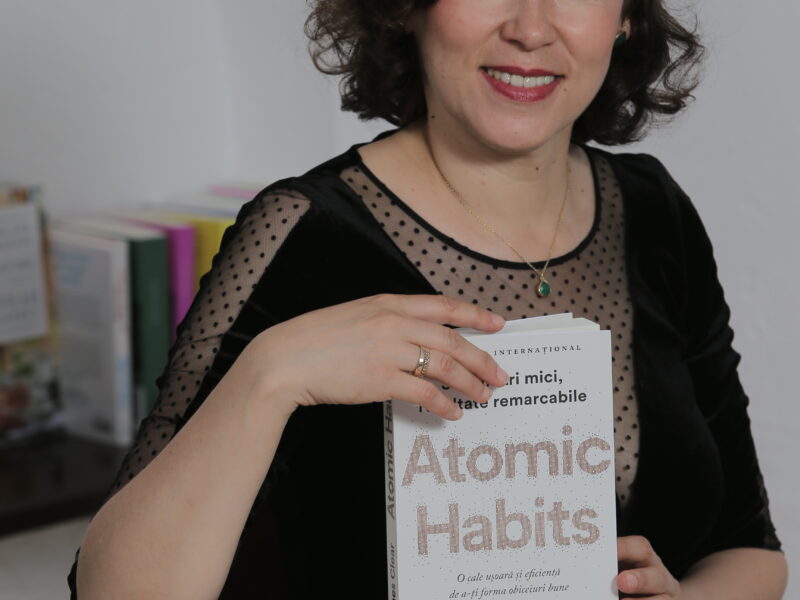Adina Vasile is the CEO at Publica Publishing House. She’s worked in several bookshops and for the past 11 years, she’s been doing a little bit of everything at Publica. Adina follows book’s lifecycle, from an idea that spans over a couple of pages, all the way to the gates of the printing press, in the bookshops, in the hands of the readers, and finally into their minds. She’s a professional who’s not looking for mistakes, but rather for quick and creative ways to undo them. She’s an editor who cherishes meeting readers, who represent the source of her enthusiasm to sell, distribute, promote, and read books.
How did you join Publica and how were things at the beginning?
My first job was at Humanitas Kretzulescu bookshop, in my 4th year of university, where I’d only planned to stay for a short period of time… But something happened: I caught the books’ and readers’ “microbe” and that’s what happened. I’m a Sociology and Social Care graduate and, besides volunteering, I’ve never worked in this field, not even a single day.
After 5 years at Humanitas, I joined Publica in 2009. I also worked for a Slovenian publishing house called Mladinska. They had an office here in Romania and I used to work in their sales department.
Were they selling here?
Yes, they branched out here too, but in the meantime, they closed it. They also had a bookshop in Bucharest. I worked in the marketing department for Diverta’s books division for 4 months and it was very different from my previous bookshop experience. That’s how I realized I was missing talking with the readers and also the environment in which a book is more important than all other things: sales, goals, etc. So in 2009 I got to Publica, where I found the joy that I had previously lost. At the beginning, I was in charge of corporate customers (I still do that, but not exclusively).
They started back in 2007.
2007 is also the year when they published their first book, Funky Business, and two years later I joined their team. We’re a pretty small team, but we work very well together.
How was it?
It was good. I felt delighted, as I was also organizing a lot of corporate events with bookstalls. It was like an extension of the bookshop environment. Generally speaking, communicating with the readers is the most pleasant aspect in this story; that’s how you find resources and ideas, and that’s what helps you see in which direction you can go next.
What’s your workday looking like now? Since you’re Publica’s CEO.
That sounds more elaborate than it really is. I’ve been CEO for a year, the pandemic year. I’m still in charge of book sales for corporate customers, of our online bookshop and of the printing part, I collaborate with printing houses, and make sure that we have all the books just as we want them to be. Since we’re a small team, we’re all in charge of everything that needs to be done at a certain point. If we’d have been at the office, we might have organized ourselves differently, but now is different too, bookshops have suffered quite a bit during the last year. So I couldn’t really tell you what I do as an executive because somehow it wasn’t planned. Mainly, I do the same things. I still work in sales. I still work in the corporate world. I’ve just added a few other things. We also have a website and an online bookshop for which we create marketing plans and campaigns while looking for ways to retain our customers.
Could you explain the term “corporate customers”?
They’re the companies, actually to be more precise the people working in companies from the training department that offer different book rewards to their employees. Usually nonfiction and personal & professional development books are appreciated by the corporate people. Besides just offering them books at the end of a training or when they have different events, we also have other partnerships with them. Rather than just a weekly planner or a personalized pen, people will always appreciate a good book. That’s a part of our public: the corporate readers.
You’ve mentioned online and offline bookshops. What are the principles of a good collaboration with them?
În principal pe o bună relație cu oamenii din aceste companii. Cum o am cu Vlad [care ne-a pus în legătură] de la Elefant, cu care lucrez eu, de exemplu, sau cum sunt cei de la Cărturești, Humanitas și alte librării cu care lucrează colegii mei. Colaborarea bună vine și dintr-o permanentă comunicare cu ei. Ne gândim cum putem să-i ajutăm și pe ei să promoveze sau să expună cărțile noastre mai bine. Pentru că ei se ocupă de zeci, sute de edituri și atunci nu au de unde să știe totul despre orice carte, ce potențial are. Și cred că asta e. O bună comunicare cu oamenii din librării!
So, with people.
Yes, with people. It’s essential to be on good terms with your collaborators. And this takes time and constant communication.
Are there any sensitive spots in the relationship with bookshops? What’s not working when it isn’t working?
What’s not working when it isn’t working… that’s a good question! Fortunately, things have been working all the time. We’ve always been an upward trend. Things worked out, we found solutions for each of the problems we’ve had.
I think you’re lucky to be able to say this.
Yes, we are.
And how do you initiate a partnership with a new bookshop? For instance, let’s say a new one is set up. In this case, is it them who come to you or the other way round?
Usually, they come to us. We’ve already done this for a while now, we’re famous, a lot of people know about us and they look for our books. When a new bookshop has opened, people say “I am already familiar with your books, so I want some”. It also happens that we find a new spot in our daily walks, but that’s very rare. Most of the times, they approach us and that’s how we start a collaboration.
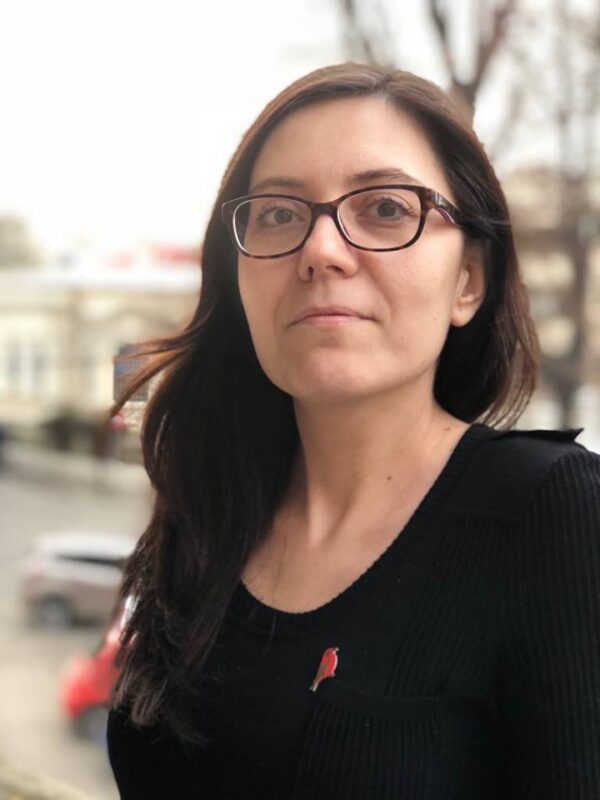
How do you get involved in these dynamics once you’ve sent them books? What happens with the books once they’re in the bookshops?
Visiting the bookshops is really important. That’s where we see how the books are ranged on shelves, where we see what else we could do, which of the titles work, which don’t and so on. Bookshops are our partners. We support each other. I mean, once the collaboration has been established, it’s nothing like a concluded sale or a transaction. We’re building and at the same time improving a relationship in which constant feedback is really important.
You mean you organize events?
We hold book launches in bookshops, but not many since we’ve only published a few Romanian authors so far. It’s quite difficult to bring Lindstromto Romania, for instance. That’s what the guys from Brand Minds usually do. And we don’t have too many events either. But we do have some Romanian authors that we’re trying to promote.
What’s the easiest way to sell books? Being part of a publishing house or of a bookshop?
The easiest way to do it is from bookshops because they allow you to meet with readers and there is a huge variety of books.
And if that one isn’t working, the other will.
Those who visit bookshops are very different. You can definitely find something suitable for everyone. When you are part of a publishing house you can rely on the product itself. I mean the book. For instance, we can guarantee that every one of the books we sell is very good. And that’s because, if we only publish 3 or 4 books a month utmost, then we have to think it through and invest in the whole process, starting with the translation, the design, so everything, I mean, absolutely everything must be ok. Good products are easier to sell.
Speaking about design, your books are very easy to pinpoint. Was this a strategy since the very beginning?
Yes. We work with a designer, Alexe, our colleague. He’s a designer, he makes other things too, not only book covers. That’s why all of our books look like they would fit into the same puzzle, they have a similar design. We borrowed just a couple of covers from the original editions, only when it was stipulated in the contract. We’ve adapted most of them, we’ve created them – well, actually, Alexe did it.
A lot of times I’ve heard editors complaining their readers are almost always determined to buy a book when there are some extra discounts involved, discounts that are available mostly in case of online bookshops. I’ve noticed that Publica doesn’t usually offer more than a 20% discount. What other alternatives do you use to attract your readers?
Yes, we’re not very passionate about discounts. We have a special loyalty program; I mean for those buying on our webite . They’re the ones who receive discounts. I’m not talking about the discounts we can see rolling around on the market: 40%, 50%, etc. That’s not real. We start from the idea that every book we’ve published involved a lot of work and so, everybody should be rewarded for the work they’ve done; we want to get out books for their right value. Our books have fair prices. We only offer discounts during book fairs, occasionally we have special offers, and these are mostly dedicated to our loyal readers. That’s because the book’s price involves certain costs which turned the final product into what it is. That’s why we’re not big fans of huge sales. And if someone really wants to read a book but financially can’t, then we offer them that book.
I think that’s really brave. You’re basically going against the stream.
Yes, I used to go crazy too when I saw that other publishing houses would just offer considerable discounts for books that had just been published. I don’t think it’s fair for the clients either: you know this book isn’t worth 10 lei, so from the start you ask 20 lei and offer a 50% discount. So, I think it would be fairer to establish the discount within the limit of 20% or 25%; I wouldn’t like to buy a book today and find out that the same book is sold with a 50% discount a month later. It’s the same thing that happens with clothes, if you like. The products sold during final sales are usually out of fashion.
We were talking about book covers that are easy to pinpoint. I also find the name of your collections super catchy.
Yes, we’re taking those decisions in-house.
Does it matter? Do you think that a book would sell better if you introduce it in a particular collection or is it just something related to taxonomy, in order to keep the books organized somehow?
No. They’re ranged according to their subject, like our recent science collectionfor instance, which is selling very well at the moment. People are really thrilled about it. Other than that, we also had to give up some collections. We had an entrepreneurship collection which doesn’t exist anymore. We still publish this topic, but don’t necessarily put it in one collection. Still, if you’re referring to Victoria Books, Narator, these are actually imprints. Victoria Books consists only of biographies, while Narator is dedicated to creative nonfiction.
So, they work as imprints. What about the science collection? Is that an imprint too?
No, it isn’t. The science collection is similar to our economics collection called Small books, big profits. Financial investments. As for Victoria Books, they’re different.
Do you have dedicated people working separately at those imprints?
No, no. When I say that we publish around 3 or 4 books a month, I included these too. The rhythm at Victoria Books and Narator isn’t that fast, here we’re talking about the entire editorial plan.
Which is Publica’s absolute bestseller?
Walter Isaacson ’s Steve Jobs – The Exclusive Biography is our best-selling title.
What does a bestseller mean? How many figures?
For us? From the moment we’ve published a book, more than 15,000 copies sold would be a bestseller, while the book would still be selling. To give you some examples, Kahneman’s Thinking, Fast and Slow , Jonas Ridderstråle’s Funky Business Funky Business (Publica’s first book), Ron Kaufman’s (who frequently comes to Romania and takes part in different events) Uplifting Service (, Malcolm , Malcolm Gladwell’s books, Andre Agassi’s autobiography, Open. . There’s also Musai List by Octavian Pantiș.
Who’s Romanian...
Romanian!
How cool!
Yes.
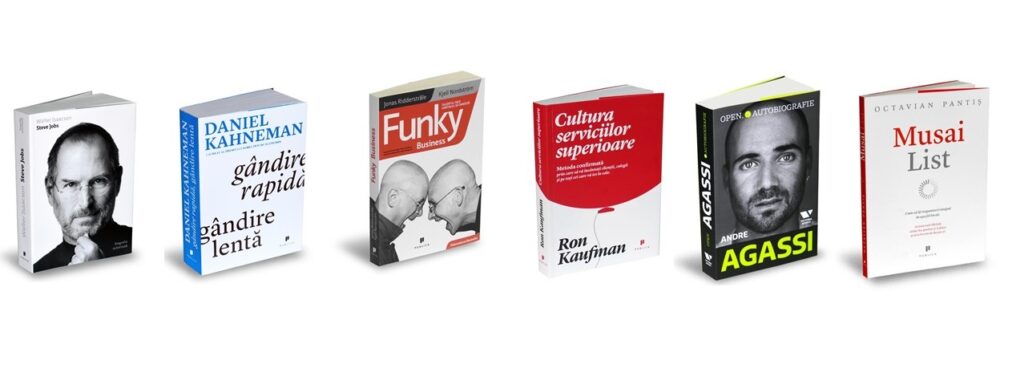
Speaking about Romanian and foreign authors. Foreigners already come with a reputation, a background, because you only pick the best. How do you proceed with the Romanian ones? How do you pick them and what’s your relationship with them?
In most of the cases, they came to us. Because we’ve already consolidated this brand of business book publishing house and that’s what we publish. There are other publishing houses with good business and nonfiction books, but they have other topics under their umbrella too. Apparently, we’re one of the best business publishing houses in Romania. So, if you want to release a business book, you call us. That’s what happened with Octavian Pantiș, for example. And the same with Iancu Guda, two of his books were published by us. We were collaborating with the company he works for. We had various marketing projects together, one thing led to another, so one day, he contacted us and said “look, I like you, guys, and I’d like to write a book, let’s publish it together!”. Oh, or Radu Negoiță, with Disconfort Residence, if you know his book.
Yes, I do.
He came to us during a Bookfest book fair, he presented us his manuscript, and that’s how we published the book.
I suppose you turn down a lot of people too.
A lot of them. If we stick to our 3-4 books a month schedule, then yes, we turn down a lot of authors. Sometimes, we have to refuse them not because the book isn’t good, but because it doesn’t fit into our portfolio. It would fit better somewhere else.
In one of your recent interviews, you were saying that you couldn’t wait for the book fairs to be resumed in order to meet the readers again. How important is meeting with your readers, taking into consideration your medium and long-term sales? What’s the result of all this? Do you publish another book written by the same author if the readers tell you they liked one book or another?
Da, sau ne spun ce au citit. Și nu doar la târg. La târg ai ocazia să îi cunoști. Cunoști oamenii care îți citesc cărțile. Dar în tot restul anului primim recomandări de la cititori cu anumite cărți pentru care solicităm apoi manuscrisul original de la cei care dețin drepturile. Avem deja câțiva cititori fideli care ne recomandă cărți. Oameni care sunt antreprenori sau sunt cititori pasionați. Asta e fain la târguri: că ajungi să cunoști personal omul din spatele unui număr de comandă! Și te și încarcă foarte mult cu energie bună, că foarte mulți vin și sunt entuziasmați de titluri, de modul în care arată cartea sau de calitatea traducerii. Sunt unii care ne mai trag și de urechi uneori, ne arată unde am mai greșit. Unele cărți au fost corectate încă o dată după ce le-am tipărit. Am greșit, ne-am asumat. Adică ascultăm și feedbackul negativ.
You said people recommend you different titles. What do you do about those suggestions?
We already knew about those titles, we had them in our sights or even started translating them, but when people tell us about them too, then it’s a confirmation that those books will be appreciated and successful afterwards.
Sometimes, I listen to Andreea Roșca’s podcast in which she recommends books, and I saw you published some of them.
Yes, indeed. The books recommended by Andreea are really good ones. She reads them in English once they’re published and shortly after that we manage to publish them in Romanian.
What are the biggest challenges in your job? I mean, the printing part seems pretty difficult to me.
It is but I’ve managed to maintain a good collaboration with several printing houses and things go well, I don’t have any big challenges to face, or, at least, I don’t perceive them like that.
So, everything is fine.
Not everything but, when something doesn’t work, it’s easy to fix it. I mean, it doesn’t necessarily seem to be an obstacle. Of course, there are all kinds of situations, some of our translators fail to respect their deadlines, we make all sorts of mistakes too, but since we’re a small team, things can be fixed easier and we’re all very dedicated, I mean we don’t reach to a dangerous point, or if we do, it hardly ever happens.
I used to work for Univers Publishing House and I once mistyped an ISBN, so a book came out with the wrong ISBN. It was something difficult to fix.
It happened to us as well. We’ve also printed books with mistyped ISBNs. It happened. What we did next was to order some barcodes that we stuck on the cover and then fixed the next print run. There’s nothing that can’t be fixed. It happens. We once published a book that had no contents. The only one who doesn’t make mistakes is the one who doesn’t do anything
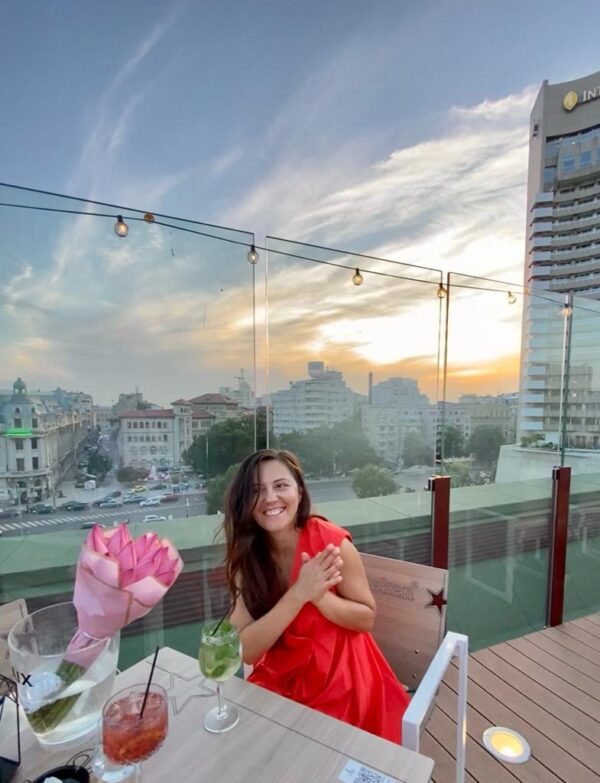
Your greatest satisfaction? Or the greatest ones?
Our greatest satisfactions come from our readers, from their appreciation towards important books from which they can learn something. That’s our greatest satisfaction. That’s what fills up your batteries: people telling you they loved one of your books, that it was an amazing choice, and that it’s awesome and well translated. That’s what makes us happy!
What advice would you give to someone who’s interested in publishing house marketing or in the production process? To a student, let’s say. What helped you?
The bookshop experience and the fact that I’ve read lots of different books were the two most important things that helped me. I read both fiction and nonfiction. It helps me stay connected to the book world. Otherwise, as long as you have a positive attitude, you don’t need much else. Everything can be learned. Sending a book to a printing house: if I write down the instructions on a piece of paper, tomorrow you’ll be able to do that. It’s not rocket science.
And who taught you all this?
I learned everything from my co-workers. We all learn from each other. We all think about what can be improved, we do brainstorming, then we debate, and test the ideas.
Recently, I happened to read two books at a time – The Orchid and the Dandelion and Why Mummy Drinks. One of them out of some sort of scientific curiosity, the other just for fun. Do you have any guilty pleasures when it comes to books?
I read children books. Some of them even more than once. Michael Ende’s Momo or The Neverending Story . I like them very much. The Little Prince, which I’ve read over and over again. I’m not sure if it’s a guilty pleasure. Do people of my age still read children books? I like them. Otherwise, I’m not a big fan of chick lit. I’d rather watch the movie instead. If I’m to invest time in reading a book, I want that book to be good. We only publish nonfiction, but I love fiction too. I like Jonathan Coe, Javier Marías, Carlos Ruiz Zafón, and many others. I read books from different publishing houses. Again, it’s not a guilty pleasure. I don’t have something like that when it comes to reading.
Then, red wine.
Yes! Red wine is always welcome, and it goes so well with reading!
[This interview was recorded and transcribed.] [Translated into English by Oana Muscalu, copy-edited by Ana-Maria Mihai.]

